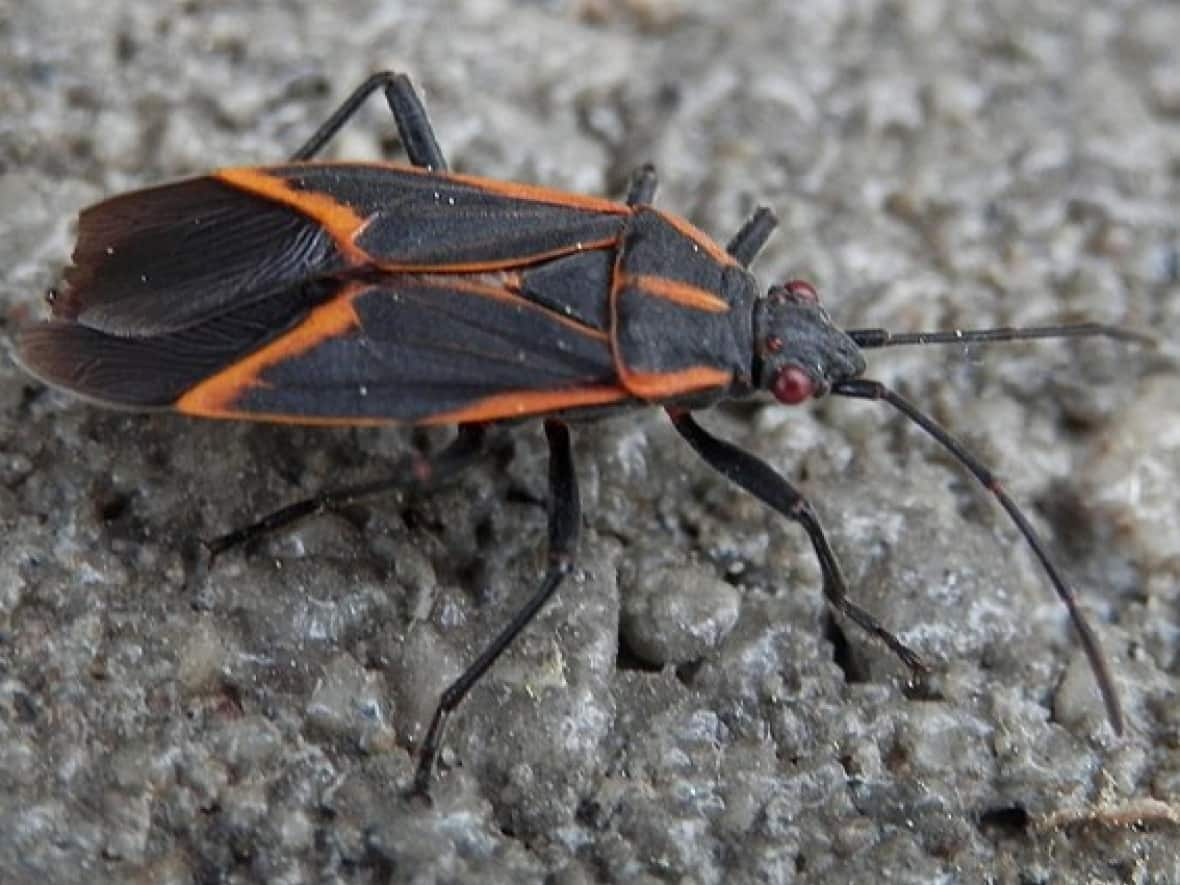What are boxelder bugs? Also, why you should never squash them

It's not a beetle, not a cockroach, and not something you should squash, no matter how many squeeze their way into your home.
All through fall and winter this year, CBC London has noticed social media posts and questions about a particular type of bug turning up inside homes. It's black with red edges, almond-shaped and about two centimetres long.
Antonia Guidotti is an entomology technician at the Royal Ontario Museum in Toronto. She says these are likely boxelder bugs. They are native to North America and get their name from the boxelder tree, also known as Manitoba maples, whose seeds are an important food source for the insects. In some areas, they're called maple bugs.
Guidotti says boxelder bugs aren't technically classified as beetles because they don't have mandibles to chew up food. Instead they have "mouth-sucking parts" for slurping up juices from plant secretions and seeds. They also have wings and can fly short distances.
Like a house cat, boxelder bugs love to seek out the sun. They often mass on the south and west-facing exterior walls of buildings as they try to stay warm when the weather cools in the fall. As the weather gets cooler, boxelders often find ways to come indoors.
"The adults like to overwinter in a nice, warm space, like people that head south for the winter," said Guidotti.
Boxelder bugs also tend to congregate together, so where there's one, there are often many more.
Once spring arrives and the weather warms up, they often become active again, motivated by a desire to get back outside so they can get back to feeding on tree seeds.
And while they're unwelcome guests, Guidotti said boxelder bugs aren't known to bite and they won't destroy your home with chewing.
"They're more of a nuisance bug as opposed to anything that people really have to worry about," said Guidotti. "They're not going to damage anything and they're not going to bite you."
So how do you get them out?
Their guts stink
Guidotti advises just sweeping them up — a broom and dustpan work well — and tossing them outside. They can also be sucked up with a vacuum or grabbed in a tissue and flushed down the toilet.
So why is it not advisable to squash boxelder bugs? Guidotti says their red guts are stinky and can leave permanent stains, particularly on light-coloured walls, curtains or linen. They can also emit the stink when they're under stress.
"They will release a really smelly compound if they get upset so you don't want to disturb them if you can avoid it," she said.
Guidotti also isn't in favour of spraying insecticides for boxelders, even if they keep coming in.
"Whatever chemical you're spraying could do a lot more harm than these bugs ever will," she said.
She recommends making sure your doors and windows are well sealed with screens and caulking so the heat-seeking bugs can't get inside.
So why are we seeing more boxelder bugs more now?
Guidotti said one theory is that they thrived over last summer's dry conditions, so more survived into the winter.
Also, the boxelder and other bugs like them aren't an appealing snack for most birds.


